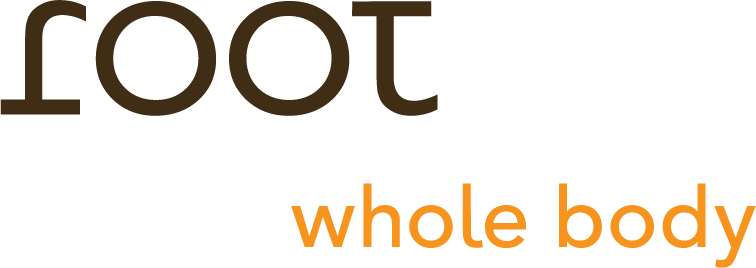 Sunday was living up to its name for once, sending afternoon light softly through the window to golden the faces and shoulders of the students gathering there, forming a semi-circle with their mats, gathering blocks and straps from the closet, speaking quietly amongst themselves. We came to learn about Tadasana, Mountain pose, standing. We stand and walk every day, and though we may not often feel like mountains, it seems so simple. But then, maybe that’s why the Tadasana workshop was filled with eager students. Surely, something so seemingly simple must be incredibly complicated. What secret was our teacher, Jay Fields, going to divulge? As it turns out, standing is, in fact, complicated, but not in the way you might think.
Sunday was living up to its name for once, sending afternoon light softly through the window to golden the faces and shoulders of the students gathering there, forming a semi-circle with their mats, gathering blocks and straps from the closet, speaking quietly amongst themselves. We came to learn about Tadasana, Mountain pose, standing. We stand and walk every day, and though we may not often feel like mountains, it seems so simple. But then, maybe that’s why the Tadasana workshop was filled with eager students. Surely, something so seemingly simple must be incredibly complicated. What secret was our teacher, Jay Fields, going to divulge? As it turns out, standing is, in fact, complicated, but not in the way you might think.
It all comes down to the psoas, a muscle I’d never thought much about. It begins on our spine behind the diaphragm, connects all the way down our lower back, drapes through the pelvis, and ends on a knobby point on the femur, the thigh bone. It’s a muscle so internal, so intrinsic, that we rarely consciously feel stress there despite it’s size and importance, keeping our spine stable, allowing for hip flexion and rotation. Even if I had thought about it, I probably would have been more curious about the function of that silent p (really, what’s up with that?) than the function of a deep muscle I’m not even consciously aware of.
Jay invited us to sit comfortably and listen, and slowly to become conscious, at least on an intellectual level, of that crucial muscle. The scholar and yogi spoke to us in calming tones, her bay leaf shaped earrings winking in sage agreement. Once we had an intellectual grasp on the psoas, she showed us how we are physically unaware of it’s power. We pressed on the shoulders of a partner, sending them bending, hips jutting out, shoulders back, beneath the weight of our hands. Then, she showed us how to activate our psoas, using it to stand, and to move our hip bones into their sockets. With the simple adjustment our partner was no longer able to send us bending. We were standing a little more like mountains. Pretty amazing. We were learning to stand on our bones instead of our flesh. So that’s it, remember to stand on your bones, and you can stand tall. Okay, that’s not quite it.
After a few stretches on our right side, we can came to sit up straight and then to bend over our legs, and finally come to standing, feeling the difference the stretch had made. “I feel lighter,” one student said. “More open,” said another. Indeed, the difference was astounding. However, despite our new openness, and even after we’d stretched both sides, we were reminded throughout the class to soften our “will center”. In difficult situations, and in difficult poses, we tend to push our ribs forward, putting the weight we were working so hard to let our bones carry, as they’re made and willing to do, right back on to our soft tissue. This is the very thing that caused us to bend beneath the weight of a partner’s hands on our shoulders. Things were getting complicated. It just so happens that behind the stubborn ribs we push forward, our third chakra lies, our ego, the place we use to make things happen, when perhaps we should allow them to happen.
A violist in the class remarked that while making music happen it’s important to remember to relax. During difficult passages she said, it’s common to tense the shoulders, the fingers, especially when supporting a large instrument. (The viola’s quite a bit bigger that a violin, she reminded us) It seems that relaxing should be so simple. So why is it so complicated? “Our bodies are fine-tuned instruments,” said Jay, “and when you’re standing the way you were meant to, you resonate.” But when our psoas is tense, and when it’s weak from letting other muscles compensate, we cannot stand like a mountain. We have to let go, let the parts of ourselves that are meant to carry us do so, let our ribs relax, our will, our ego.
We were right, there is more to standing than being upright. We all learned something about the true nature of mountains on Sunday. And our homework? Psoas sit-ups. At least 16 a day, or was it 7? In any case, we’ll be practicing, so if you notice a certain, pleasing resonance in the halls of Root, you’ll know why.
Join us at Root for the next workshop in the Integrity Series: Breath and Pranayama Basics, Sunday, May 1st from 1:00 – 4:00pm. Through yoga, we will continue to find alignment within our whole selves, anatomical, psychological, and spiritual. Space is limited. Sign up today.
The Silent P:
http://dictionary.reference.com/browse/psoas
http://www.guardian.co.uk/commentisfree/2008/may/27/1
Yoga For Music:
http://www.yogadork.com/news/asana-for-arias-yoga-for-opera-singers/

